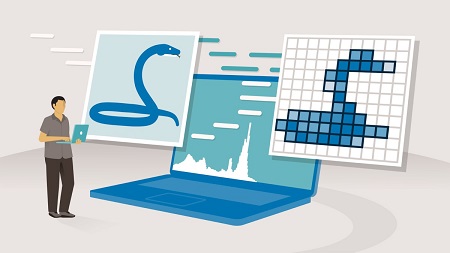
English | MP4 | AVC 1280×720 | AAC 48KHz 2ch | 2h 00m) | 552 MB
Image processing is a ubiquitous technology these days, used in just about every feature of smartphone cameras, in video games, social media apps, graphics software, and much more. Computer vision is the field of science that makes it possible for computers to not just capture images, but to process, analyze, and understand digital images. In this course, Eduardo Corpeño shows you how to use Python to write image processing operations of your own from scratch, to get a deeper understanding of the under-the-hood operations of image processing and popular tools like OpenCV. Eduardo shows you how to tap into the details of the algorithms behind image processing so you can understand what’s going on inside and make better use of these tools in the future. He also provides programming challenges so you can create your own implementations and compare your work with his solutions.
Table of Contents
Introduction
1 Computer vision under the hood
2 What you should know
3 Using the exercise files
Setting Up Your Environment
4 Installing Anaconda and OpenCV
5 Testing your environment
The Basics of Image Processing
6 Image representation
7 Color encoding
8 Image file management
9 Resolution
10 Rotations and flips
11 Challenge Manipulate some pictures
12 Solution Manipulate some pictures
From Color to Black and White
13 Average grayscale
14 Weighted grayscale
15 Converting grayscale to black and white
16 Adaptive thresholding
17 Challenge Removing color
18 Solution Removing color
Filters
19 Convolution filters
20 Average filters
21 Median filters
22 Gaussian filters
23 Edge detection filters
24 Challenge Convolution filters
25 Solution Convolution filters
Image Scaling
26 Image downscaling methods
27 Downscaling example
28 Image upscaling methods
29 Upscaling example
30 Challenge Resize a picture
31 Solution Resize a picture
Fun with Cuts
32 Image cuts
33 Stitching two images together
34 Cuts in panoramic photography
35 Challenge Stitch two pictures together
36 Solution Stitch two pictures together
Morphological Modifications
37 Why modify objects
38 Erosion and dilation
39 Open and close
40 Challenge Help a robot
41 Solution Help a robot
Conclusion
42 Next steps
Resolve the captcha to access the links!